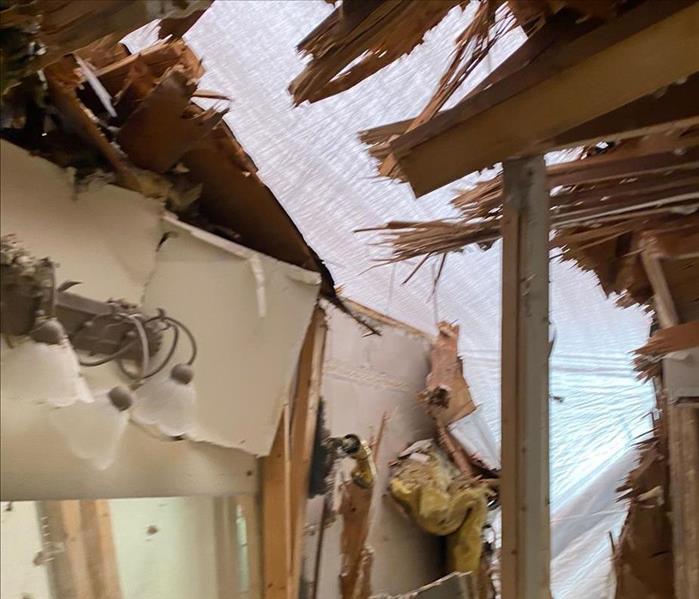What To Do After Storm Damage in Fairfield
7/15/2020 (Permalink)
When heavy rains, hail, high winds, and lightning come through Fairfield County, your home or business may suffer damage from the storm. Weather damage can be overwhelming for even the most prepared homeowners because of just how destructive it can be and the extensive need for storm damage repairs.
If you are in need of emergency assistance, call SERVPRO of Westport/Fairfield 24/7 at 203-707-1952.
Types of Storm Damage
1. Impact Damage
Impact damage is just what it sounds like - damage from things hitting your property. Strong winds can topple trees, tree branches, or power lines and cause a huge amount of property damage. One large tree can demolish a home or business, and if a branch goes through your home's roof, it can cause water damage inside on top of the roof repairs needed on the exterior.
2 Wind Damage
When a summer storm hits, strong winds usually follow. When winds are strong enough, they may be able to lift the roof shingles of your home and cause a considerable amount of roof storm damage. When you see curled shingles, it's a good idea to have a roof inspection done to see if any repairs are needed. Strong winds may also be able to pull back the siding of your home and expose the soffit and insulation to the elements.
3 Hail Damage
Usually only seen in the summer, hails storms can cause a large amount of damage to the roof of your home. Hailstones have rough edges that are able to puncture your roof and dent your siding. Signs of damage from large hailstones are split shingles, darker-colored impact marks, or visible roof felt. Paying attention to these signs can help prevent water leaks in your home later on.
4 Lightning Damage
Lightning strikes can cause trees or power lines to cause impact damage to your home, but lightning can also put your home at risk for a fire. If lightning strikes your home, you may suffer from fire damage, smoke damage, and possibly flood damage from the firefighting efforts.
Steps To Take After Weather Damage
- Wait until it is safe to go outside. Don't go out in the middle of a hurricane to see if there's any damage to your roof. If something happens that needs to be immediately handled - such as a fallen tree on your home, you will know without having to go out in the storm.
- Inspect your home once the storm has passed. Look for signs of roof damage, pulled back siding, or water leaks inside your home. Take photos of any damage you find for your insurance company.
- Turn the power and gas off in your home if needed. This is needed when your home is experiencing major water damage or flooding from something like a roof leak to keep yourself and others safe.
- Contact your insurance company. Try and figure out if your storm damage will be covered by your homeowners insurance policy. Your insurance company will also advise you on any other steps you should take. If you need help, our Project Managers can help you file your claim.
- Prevent further damage by calling a storm damage company. If you have a tree down on your home and a hole in your roof, you'll want to be able to contact a storm damage restoration company that can help remove the tree, board up your roof, and immediately begin emergency services within your home. SERVPRO of Westport/Fairfield can board-up or tarp your home, clean up debris, handle any flooding or water damage, and then begin repairing and restoring your home.
Does Homeowners Insurance Cover Storm Damage?
Traditional homeowners insurance covers many types of weather damage, including: wind, hail, lightning, some water damage, and impact damages. These damages are unpredictable, and in most cases there was nothing you could do from prevent them from happening. That's why it's covered!
There are some kinds of storm damage that aren't covered by insurance. Flooding from storms is usually not covered by your insurance company because it is likely groundwater flooding your basement - and this is something insurance companies see as preventable. However, water damage or flooding from a tree falling on your roof would be covered.





 24/7 Emergency Service
24/7 Emergency Service
